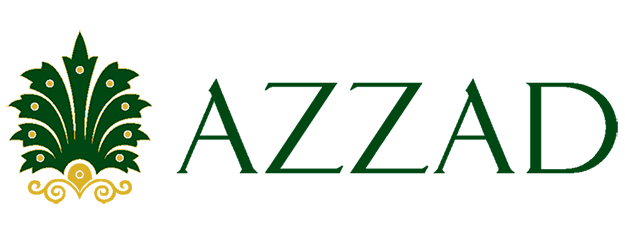There’s no denying the benefits of a college education: the ability to compete in today’s competitive job market, increased earning power, and expanded horizons. But these advantages come at a price—college is expensive. And yet, year after year, thousands of students graduate from college. So, how do they do it?
Many families finance a college education with help from student loans and other types of financial aid such as grants and work-study, private interest-based loans, current income, gifts from grandparents, and other creative cost-cutting measures. But savings are the cornerstone of any successful college financing plan.
COLLEGE COSTS KEEP CLIMBING
It’s important to start a college fund as soon as possible, because next to buying a home, a college education might be the biggest purchase you ever make. According to the College Board, for the 2018/2019 school year, the average cost of one year at a four-year public college is $25,890 (in-state students), while the average cost for one year at a four-year private college is $52,500.
Though no one can predict exactly what college might cost in 5, 10, or 15 years, annual price increases in the range of 4 to 7% would certainly be in keeping with historical trends. The following chart can give you an idea of what future costs might be, based on the most recent cost data from the College Board and an assumed annual college inflation rate of 5%.
Tip: Even though college costs are high, don’t worry about saving 100% of the total costs. Many families save only a portion of the projected costs–a good rule of thumb is 50%–and then use this as a “down payment” on the college tab, similar to the down payment on a home.
FOCUS ON YOUR SAVINGS
The more you save now, the better off you’ll likely be later. A good plan is to start with whatever amount you can afford, and add to it over the years with raises, bonuses, tax refunds, unexpected windfalls, and the like. If you invest regularly over time, you may be surprised at how much you can accumulate in your child’s college fund.
Table assumes an average after-tax return of 6%. This is a hypothetical example and is not intended to reflect the actual performance of any investment.
529 PLANS
529 plans are a popular tax-advantaged college savings option. You open an individual investment account and select one or more of the plan’s mutual fund portfolios for your contributions.
Unfortunately, 529 investment options are limited to what the plan sponsor offers, much like an employer-sponsored retirement plan. Those investments are likely to contain Islamically impermissible investments. There are also pre-paid 529 plans that do not involve interest but are dependent on states to set aside funds earmarked for education.
UTMA/UGMA CUSTODIAL ACCOUNTS
An UTMA/UGMA custodial account is a way for your child to hold assets in his or her own name with you (or another individual) acting as custodian. Assets in the account can then be used to pay for college (or pretty much anything else for the child’s benefit). All contributions to the account are irrevocable, and your child will gain control of the account when he or she turns 18 or 21 (depending on state rules). Earnings and capital gains generated by assets in the account are taxed to the child each year.
Under the “kiddie tax rules,” for children under age 19, and for full-time students under age 24 who don’t earn more than one-half of their support, the first $1,000 of earned income is tax free, the next $1,000 is taxed at the child’s rate, and anything over $2,000 is taxed at your
COVERDELL EDUCATION SAVINGS ACCOUNTS
A Coverdell education savings account is a tax-advantaged education savings vehicle that lets you contribute up to $2,000 per year. Your contributions grow tax deferred and earnings are tax free at the federal level (and most states follow the federal tax treatment) if the money is used for the beneficiary’s qualified elementary, secondary, or college expenses.
You have complete control over the investments you hold in the account, but there are income restrictions on who can participate. However, because nearly anyone can contribute to a child’s Coverdell (even the child), these income restrictions can be bypassed.
With a Coverdell, you can invest in the full marketplace of mutual funds and even individual stocks.
FINANCIAL AID
Many families rely on some form of financial aid to pay for college. Most financial aid is based on need, which the federal government and colleges determine primarily by your income, but also by your assets and personal information reported on your aid applications. In recent years, merit aid has been making a comeback, so this can be good news if your child has a special talent or skill.
The bottom line, though, is don’t rely too heavily on financial aid. Student loans make up the largest percentage of the typical aid package (up to 50%). The lesson: the more you focus on your savings now, the less you may need to worry about later.
GETTING STARTED
Before opening any of the account types mentioned above, first make sure you are maximizing your own retirement savings. There is no financial aid for retirees. The federal government excludes some assets entirely from consideration in the financial aid process. These assets include all retirement accounts (IRAs and employer sponsored plans).
If necessary, you can always borrow money from a 401(k) for your child’s education. Also, remember that your financial aid calculation includes an expected family contribution, or EFC. The EFC measures your family’s financial strength and is calculated according to a formula established by law. Parental assets are calculated at only 5.6%, but a child’s assets are calculated at 20%.
Because an UTMA/UGMA is considered a child’s asset, it is counted at 20% toward the EFC. On the other hand, a Coverdell education savings (and 529) account is calculated at only 5.6% since it is considered a parental asset.
We are happy to talk over your education savings options to find a fit that best meets your unique financial situation.
Note: Note: Information contained in this publication is not intended to replace specific advice or recommendations by your investment advisor. It is not intended to provide tax, legal, insurance or investment advice, and nothing in this publication should be construed as an offer to sell, a solicitation of an offer to buy, or a recommendation for any security. Unless otherwise specified, you alone are solely responsible for determining whether any investment, security or strategy, or any other product or service, is appropriate or suitable for you based on your investment objectives and personal and financial situation. Asset allocation and diversification cannot guarantee a profit or insure against a loss. There is no guarantee that any investment strategy will be successful; all investing involves risk, including the possible loss of principal. You should consult an attorney or tax professional regarding your specific legal or tax situation. Please check with your advisor for more information: 888.86.AZZAD or www.azzad.net.
Investments are not FDIC insured, nor are they deposits of or guaranteed by a bank or any other entity, so you may lose money. Azzad does not guarantee that your investment objectives will be achieved. Past performance cannot guarantee future results. Azzad only transacts business where it is properly registered or notice filed, or excluded or exempted from registration requirements. The Azzad Ethical Wrap Program is made available through an Investment Advisory Agreement and the firm’s ADV Part II brochure. The Azzad Funds are available by prospectus only. To request a free copy, including other important disclosure information, please call 888-862-9923, 5/2014©




